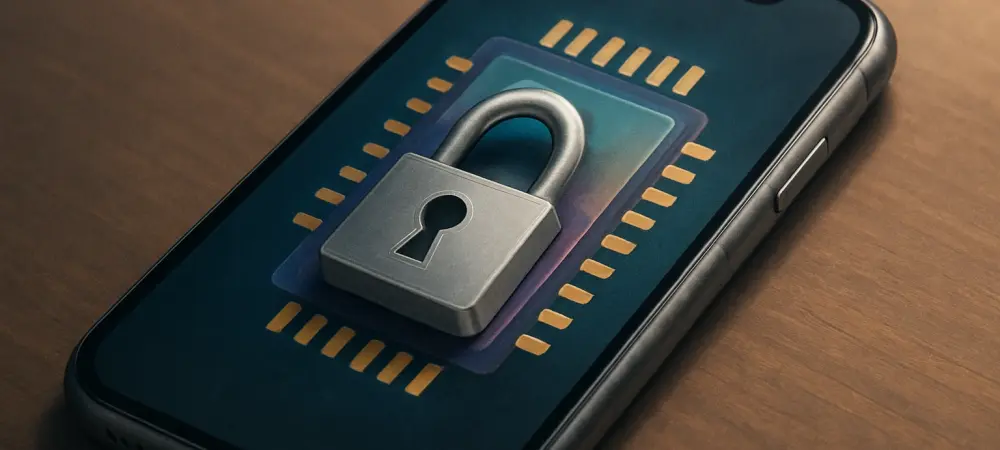What if the most critical threat to your smartphone wasn’t a phishing email or a malicious app, but an unseen attack burrowing into the heart of your device’s memory? In a world where cyber threats grow more insidious by the day, Apple has unveiled iOS 26, a software update that promises to shield millions of iPhone users from the shadowy realm of mercenary spyware. Released on September 9, this update isn’t just a routine refresh—it’s a seismic shift in mobile protection, targeting vulnerabilities that even the savviest users might never notice. This story dives into how Apple is rewriting the rules of smartphone safety with groundbreaking memory security features.
The Urgency of Memory Protection in Today’s Digital Battlefield
Memory security has emerged as a pivotal battleground for smartphone safety, especially as state-sponsored attackers deploy mercenary spyware to exploit the tiniest cracks in a device’s foundation. These threats don’t just steal data; they infiltrate at a system level, manipulating memory through flaws like buffer overflows to gain unchecked access. High-profile targets, from journalists to executives, often bear the brunt, yet the danger trickles down to everyday users unaware of the risks lurking beneath the surface.
Apple’s response with iOS 26 underscores the gravity of this issue, addressing a gap that has long plagued not just iPhones but all major platforms. Industry reports indicate that memory corruption vulnerabilities account for a significant portion of sophisticated attacks, with some studies estimating over 60% of critical exploits tied to such flaws. This isn’t merely a technical problem—it’s a call to action for stronger, preemptive defenses that can keep pace with evolving threats.
Inside iOS 26: A Fortress of Memory Safety
At the core of iOS 26 lie two revolutionary features designed to fortify memory security: Memory Integrity Enforcement (MIE) and Enhanced Memory Tagging Extension (EMTE). MIE, hailed by Apple as a historic leap in consumer operating systems, provides constant protection across the kernel and dozens of critical processes. It works by restricting attackers’ ability to manipulate memory during an exploit, slashing the odds of a successful breach.
Meanwhile, EMTE, exclusive to the iPhone 17 and iPhone Air series, takes real-time defense to new heights. Building on ARM’s memory tagging technology, this feature detects memory issues as they happen, curbing threats like Spectre V1 before they spiral out of control. Apple’s data suggests that devices running these features in beta testing saw a marked reduction in exploit success rates, setting a new standard for what smartphones can withstand.
These advancements shift the paradigm from patching holes after attacks to embedding security directly into hardware and software. For users, this means invisible yet powerful safeguards that don’t require manual intervention, while developers gain tools to build safer apps. It’s a holistic approach that redefines resilience in the face of digital warfare.
Voices from the Tech Frontier on Apple’s Bold Move
Cybersecurity experts have taken notice of Apple’s aggressive push toward memory safety, with many calling it a long-overdue reckoning for the industry. “Memory corruption has been the Achilles’ heel of operating systems for decades, and Apple’s MIE raises the bar by making exploitation exponentially harder,” noted a prominent security researcher during a recent tech conference. Such sentiments reflect a growing consensus that these vulnerabilities are central to the most damaging breaches.
Apple’s decision to open EMTE to developers via Xcode also signals a broader mission to influence standards beyond its ecosystem. By equipping app creators with cutting-edge memory safety tools, the company aims to foster a ripple effect, encouraging platforms like Android to follow suit. Early feedback from iOS 26 beta testers hints at real-world impact, with reports of thwarted attacks that would have previously slipped through undetected.
This isn’t just about protecting iPhones—it’s about reshaping how the tech world tackles systemic flaws. As one industry analyst put it, “Apple is forcing a conversation that’s been avoided for too long, and the data backs up their strategy.” With memory-related exploits costing billions in damages annually, this move could redefine trust in mobile technology.
Empowering iPhone Users and Developers Alike
For everyday iPhone users, iOS 26 offers a seamless way to stay secure without needing a degree in cybersecurity. Upgrading to the latest software, particularly on compatible devices like the iPhone 17 or iPhone Air, activates MIE and EMTE automatically, forming an invisible shield against memory-based threats. Checking device eligibility and updating through Settings is a simple step that could prevent catastrophic breaches.
Developers, on the other hand, gain access to EMTE integration through Xcode, enabling them to weave memory safety directly into their applications. Apple’s developer resources provide step-by-step guidance on leveraging these protections, reducing the risk of vulnerabilities in third-party software. This dual focus ensures that security isn’t just a top-down mandate but a collaborative effort across the ecosystem.
Beyond individual actions, staying informed about emerging threats remains crucial. Apple’s security updates and blogs serve as a vital resource for understanding new risks and tools, empowering users to make informed decisions. Together, these efforts create a fortified digital environment where privacy and safety aren’t just promises but tangible realities.
A Legacy of Security Innovation
Looking back, Apple’s rollout of iOS 26 marked a defining chapter in the fight against mercenary spyware, setting a precedent that echoed through the tech industry. The introduction of Memory Integrity Enforcement and Enhanced Memory Tagging Extension proved that proactive, hardware-backed defenses could outmaneuver even the most sophisticated threats. It was a moment that shifted the conversation from reacting to breaches to preventing them at their core.
As the digital landscape continues to evolve, users and developers are encouraged to embrace these tools, ensuring their devices and apps remain ahead of the curve. Exploring Apple’s ongoing security initiatives offers a pathway to stay protected, while advocating for similar innovations across other platforms could amplify this impact. That era of heightened memory safety laid the groundwork for a future where trust in technology was not just restored but reinforced.

